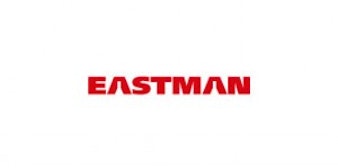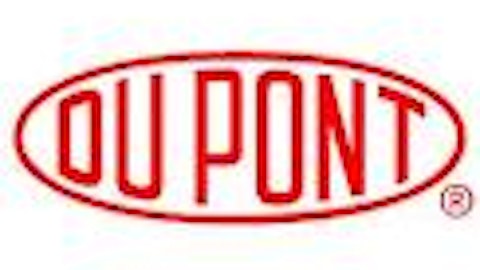
The chemical business legacy of George Eastman
Eastman Chemical was founded in 1920 with the sole purpose of producing chemicals for Eastman Kodak’s photographic business. Interestingly, George Eastman never knew that of his two connected businesses, one was going to be obsolete and the other would prosper over time.
Currently, Eastman Chemical Company (NYSE:EMN) has more than 40 manufacturing sites in 16 countries, operating in five main business segments: Additives and functional products, adhesives and plasticizers, advanced materials, fibers and specialty fluids and intermediates.
Most of its operating earnings, $385 million, or 29.6% of the total operating earnings, are generated form the fibers segment. The additives and functional products and the specialty fluids and intermediates both ranked second, with around $285 to $288 million in operating income, respectively, in 2012.
High leverage but low cost and long maturities
The $3.4 billion acquisition of Solutia at the beginning of 2012 seems to be a good strategic move, giving Eastman Chemical Company (NYSE:EMN) access to the fast-growing emerging markets, especially China. To fund the acquisition, Eastman Chemical had issued around $3.6 billion in debt, including a $1.2 billion term loan and $2.4 billion in senior unsecured notes. The company is expected to repay most of its loan this year.
In the beginning of 2012, Fitch commented that Eastman Chemica’s credit metrics would be strengthened thanks to the debt reduction and operating income growth. As of March, it had $3.1 billion in equity, $178 million in cash and as high as $4.8 billion in long-term debt. However, most of its borrowings came in at a low cost. Around $1 billion was in the 3% debentures due 2015, $893 million was the 3.6% notes due 2022 and $950 million was the credit facility borrowing.
In 2012, Eastman Chemical Company (NYSE:EMN) generated around $5.38 in EPS. Looking forward, its EPS could reach around $8.00 per share, including Solutia’s operating results. Moreover, after funding organic growth, its free cash flow was expected to be more than $2 billion in the period of the 2012 through 2015 period.
Eastman Chemical Company (NYSE:EMN) is trading at $71 per share with a total market cap of around $11 billion. The market values Eastman Chemical at only 7.2 times its forward EV/EBITDA. (EV/EBITDA represents Enterprise Value/Earnings Before Interest, Taxes, Depreciation and Amortization. It reflects the market value, adjusted by the cash and debt, in relation with the cash flow generating ability of the company.)
The cheapest among other large chemical companies
Compared to its chemical peers including E I Du Pont De Nemours And Co (NYSE:DD) and Ecolab Inc. (NYSE:ECL), Eastman Chemical is the cheapest valued among the three companies. Ecolab is trading at around $84 per share, with the total market cap of nearly $28.9 billion. The market values Ecolab at a much higher valuation at 11.9 times its forward EV/EBITDA.
In the first quarter 2013, Ecolab Inc. (NYSE:ECL) experienced strong earnings results. Its adjusted EPS came in at $0.60 per share, growth of 20% excluding the special gains and other charges. Recently, Ecolab has planned for cost savings initiatives and a restructuring in the energy market. The company expects to generate around $25 million in cost synergies this year, with the annual cost synergies of $150 million by the end of 2015. For full-year 2013, Ecolab Inc. (NYSE:ECL) anticipates that its EPS will be around $3.45 to $3.55, including the effect of the Champion acquisition.
E I Du Pont De Nemours And Co (NYSE:DD) is also has a higher valuation than Eastman Chemical. At $52.70 per share, DuPont is worth nearly $50 billion in market cap. The market values DuPont at nearly 8.1 times its forward EV/EBITDA. DuPont has been trying to strengthen its three strategic priorities, including agriculture and nutrition, bio-based industrial and advanced materials.
Since 2009, E I Du Pont De Nemours And Co (NYSE:DD) has had higher cash returns and a higher growth business with the acquisition of Danisco, Solae and MECS sulfuric acid technology. These acquisitions have generated around $3.5 billion in sales for the company. Moreover, DuPont also exited its slower-growth businesses, such as performance coatings and liquid packaging systems, which generated lower cash returns.
In the long run, the company expects to have around 7% compounded annual growth in sales and 12% growth in operating EPS. For full-year 2013, DuPont expects to pay investors a $1.78 dividend per share, 4.7% higher than the dividend of $1.70 per share in 2012.
My Foolish take
Eastman Chemical Company (NYSE:EMN) seems to be a decent buy at its current trading price due to the relatively low valuation compared to its chemical peers, including DuPont and Ecolab. Moreover, the company could take advantage of low borrowing costs for its acquisition and its operations. According to Barron’s, with a $8.00 EPS forecast, the simple 12 P/E ratio could value Eastman Chemical at $96 per share, a 35% premium to its current trading price.
The article This Chemical Business Is Relatively Cheap originally appeared on Fool.com and is written by Anh Hoang.
Anh HOANG has no position in any stocks mentioned. The Motley Fool has no position in any of the stocks mentioned. Anh is a member of The Motley Fool Blog Network — entries represent the personal opinion of the blogger and are not formally edited.
Copyright © 1995 – 2013 The Motley Fool, LLC. All rights reserved. The Motley Fool has a disclosure policy.




